When you choose an aquarium light, have you ever been on the horns of a dilemma? A desk light or a LED aquarium light? And how much light does a saltwater tank need? Take it easy, you will get answers from this article.
Content Table
Why does it need to put a light in a fish tank?
Exactly, an aquarium light is one crucial gadget for a fish tank. In this segment, we will give you ideas about the necessity of the aquarium light in fish tanks.
1. The growth of aquatic plants
Aquarium light plays a critically crucial role in the photosynthesis of aquatic plants, and in removing the carbon dioxide from your tank. Too much light will lead to algae thriving. Specifically speaking, aquarium light brings an impact on the color of plants. Without suitable light intensity, chromatic plants can not possess brilliant colors. On the other hand, plants contain chlorophyll. The proportion of chlorophyll will get promoted because of subdued light. In addition, facing unreasonable light, plants are usually eager to gain more light by growing taller or changing the morphology of leaves.
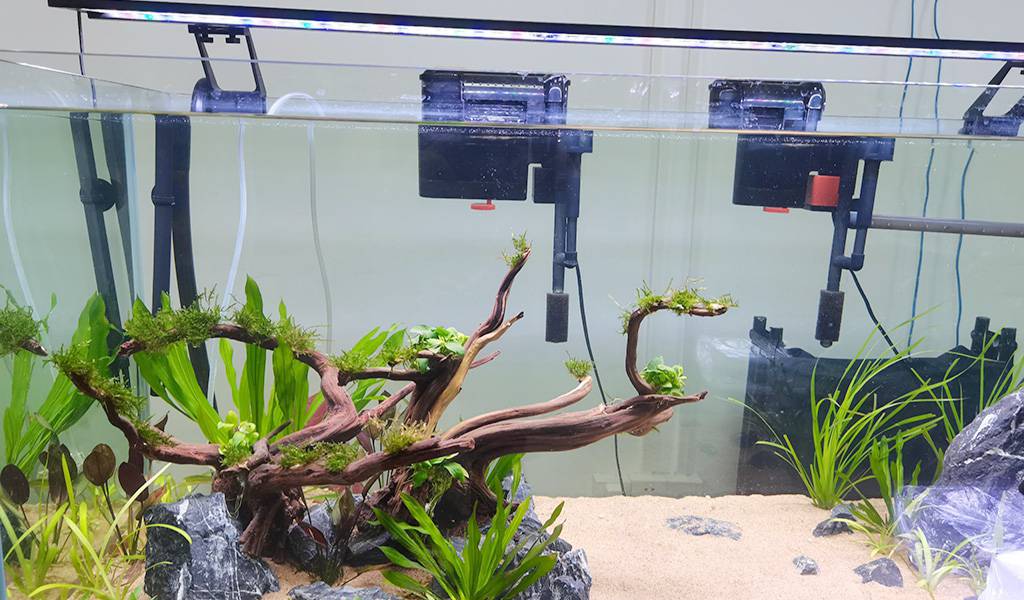
However, if so, some plants may not show their original bright colors. It sounds not so good but a little pity, right? Aside from that, intense light will lead to the thriving of algae, which will limit the growth of aquatic plants. Well, everything has two sides. It is necessary to keep suitable and stable light for various plants. 10-12 hours per day may be ideal. But be cautious, you can research the accurate requirements before setting. By the way, Light Settings for Aquarium Low-light Plants will give you guides.
2. The growth of fish
For one thing, fish like swimming around the aquarium. It means that they need light to find food and interact with their partners. For another thing, light helps enhance fish’s color and provides a more natural habitat for fish. Some fish prefer bright light, and others are fond of dim light. In general, you should keep your aquarium light on for about 8-10 hours each day. If fish do not receive sufficient light, they will face poor metabolism, stunted growth, lethargy, and loss of color.
3. Ornamental value
Aquarium light brings appealing and vibrant colors of fish, plants, and even the tank. Color rendering index, abbreviated as CRI, refers to the visual quality of aquarium light. And the scale of CRI is 0-100. 0 means the least natural light, while 100 indicates the highest natural light. Color temperature is another aspect. K-rating signifies it. Low K-rating produce warm color, red, yellow, and orange for instance. On the contrary, a high K-rating produces cool colors. In a word, with an ideal aquarium light, the ornamental value will get promoted.
In summary, aquarium light provides the light necessary for aquatic plants and inhabitants. Besides that, it also simulates natural light, which creates an environment close to the natural habitat for fish and plants.
Can a desk light work for lighting in an aquarium?
A desk light can not work for lighting in an aquarium. The color temperature and functions are not the same as an aquarium light. For planted tanks, a desk light can not meet the demands of aquatic plants. Meanwhile, regular bulbs can not produce suitable light for plants. In addition to this, running for a long time, a desk light may get hot. It will lead to fluctuation of water temperature, which is a threat to fish. Also, fish or plants may be burned if they get close to the desk light.
Does the LED aquarium light kill nitrifying bacteria?
Professional LED aquarium lights will not kill nitrifying bacteria. On the contrary, unspecialized ones will kill them. However, what is a professional one?
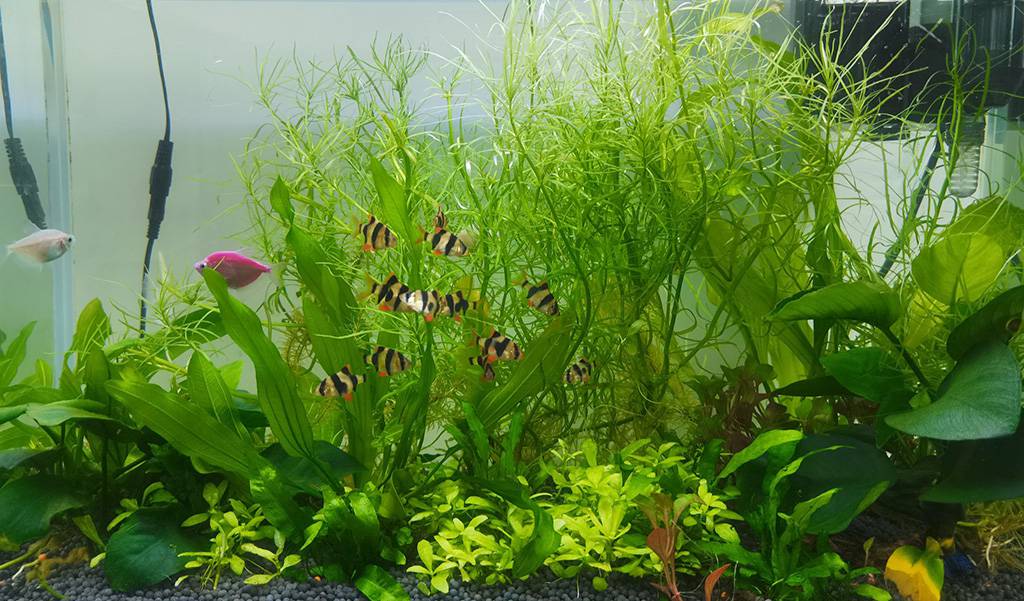
Professional aquarium light possesses ultra-strong power, which can meet the requirements of fish, aquatic pets, aquatic plants, corals, etc. Believe it or not, professional aquarium lights can work as ultraviolet and infrared lights (UV and IR lights). In addition to this, a professional one is suitable for various types of aquariums. An extendable bracket makes the light can be adjusted in length to be suitable for the different tank sizes. Meanwhile, you can set the lighting time, light intensity, and light color according to your needs. Of course, if you are busy, some professional aquarium lights also possess default mode.
The light can work automatically and simulates a sunrise to sunset. Aside from that, the professional aquarium light will gradually turn on for 15 minutes every morning. As a result, fish will not get shocked suddenly, and it will decrease the risk of jumping out of the home aquarium. More importantly, a professional aquarium light features highly efficient heat dissipation that will not heat the tank water.
For example, Bluetooth LED Light is one of the professional aquarium lights. Light intensity, light color, and color temperature can be set by yourself via APP control. Over 300 colors are available. The ocean-blue scene is special lighting including 30% Red light 50% Green light and 100%Blue light. However, it is pity that the aquarium light is just ideal for freshwater tanks. But maybe you can use it in saltwater tanks later in the future, just waiting for the Hygger’s good news! If you want to get the good news in the first place, please pay attention to Hygger Official Site.
How much light is needed for a saltwater tank?
Aquarium light is not only essential for freshwater tanks, saltwater tanks are the same. For saltwater tanks, blue and red lights are great options. Blue lights are good for corals, shrimp, and fish. It makes sense to absorb calcium and strengthen health. On the other hand, red light plays a role in helping fish grow and forming bright colors. For saltwater reef tanks, you should keep the light on for 8-12 hours per day. Without plenty of light, corals may suffer death.
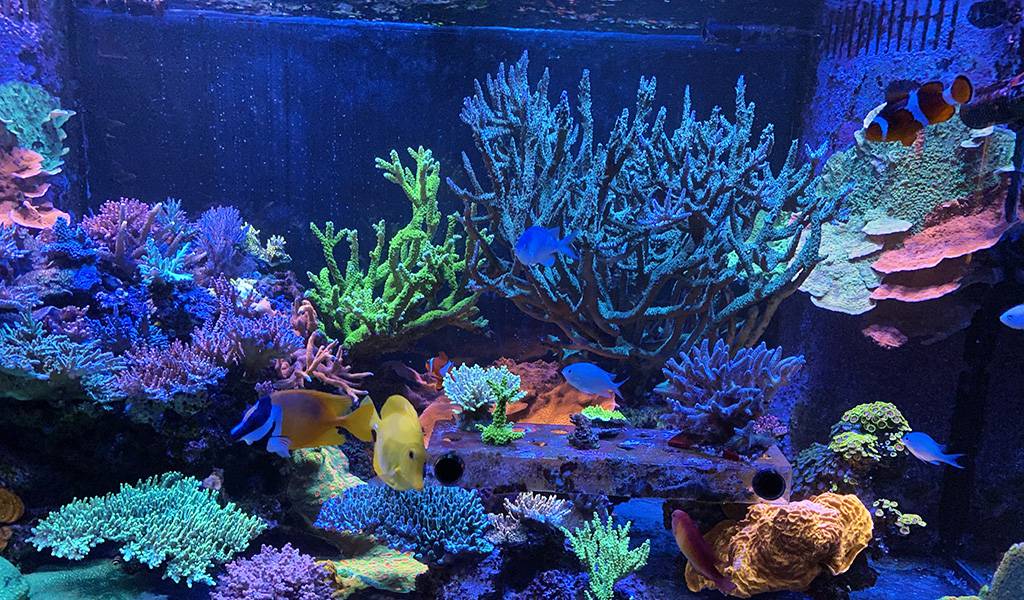
Next, we will provide some recommended light intensity for saltwater tanks in the table below. Be clear in advance, the light intensity is measured by PAR, standing for Photosynthetic Active Radiation.
| Saltwater tanks types | Recommended PAR value |
| Soft corals | 50-100 PAR |
| LPS corals (one kind of hard coral) | 50-150 PAR |
| SPS corals (one kind of hard coral) | 200-300 PAR |
By the way, some fish will nip corals, and it is better not to keep them in the same aquarium. Can I run reef tank lighting too long? The answers are there.
Nevertheless, light requirements can be varying for different species of fish and corals, as well as tank dimensions. As a result, checking the light requirements is necessary.
Final words
Aside from all mentioned above, here are some tips about choosing the ideal aquarium light for your tank. Firstly, you determine the light color according to the species in your tank. For example, aquatic plants prefer red and blue light. But the water may absorb the red light. Consequently, you can set blue light for planted aquariums. And the ideal wavelength should be 400-520nm. Secondly, you should know the tank size and what to keep before purchasing the light. Hence, you can choose an applicable aquarium light.
Since low-power light can not provide sufficient light, it is not good for your adorable fish. In addition, the aquarium light should be easy to clean and waterproof. By the way, are you interested in aquarium light for planted tanks? If so, you can go for Choosing Best Planted Aquarium Light.
Dear friends, that is all for toda
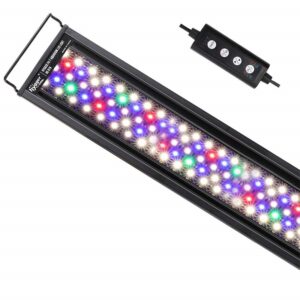
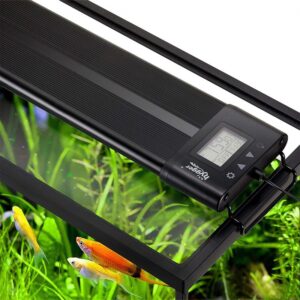
Leave a comment